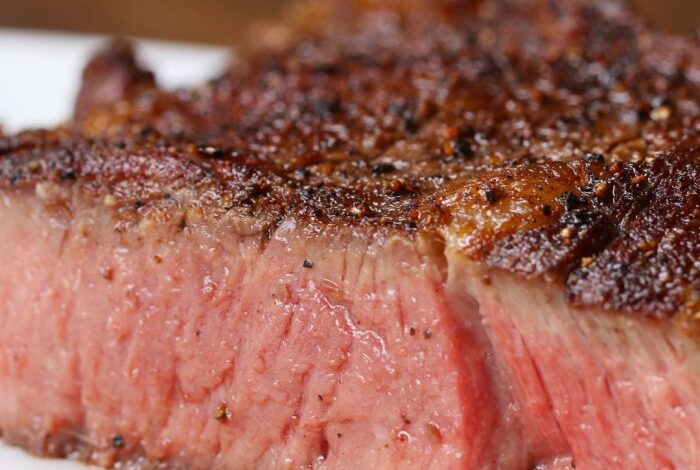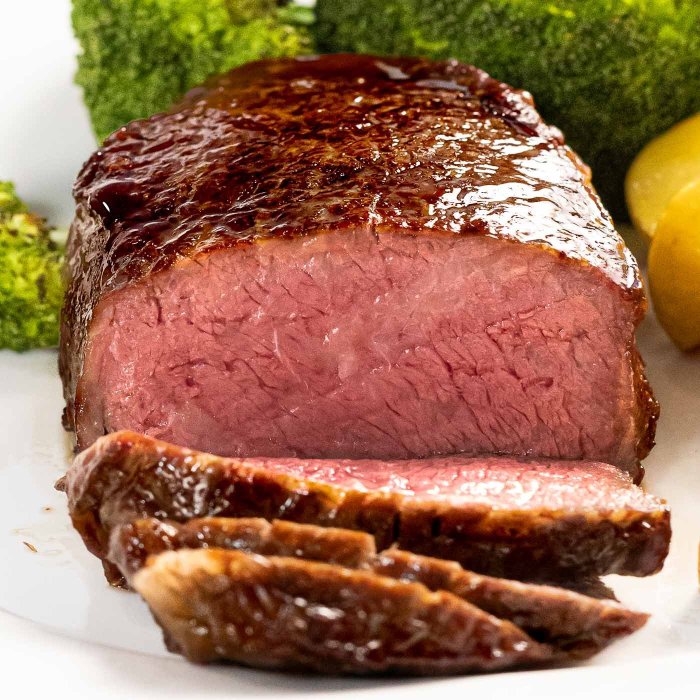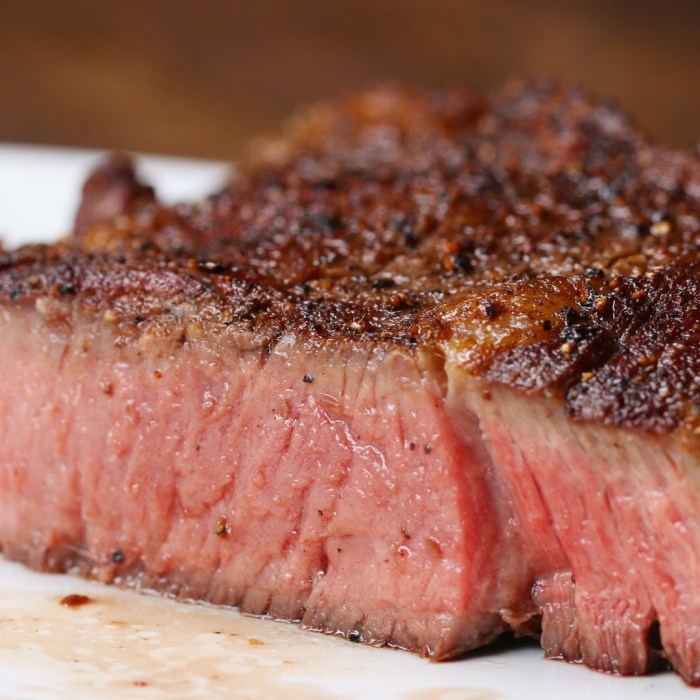
The Best Reverse Sear Method for Thick Steaks
The best reverse sear method for thick steaks is a game-changer for anyone who loves a perfectly cooked piece of meat. This technique involves cooking the steak at a low temperature for an extended period, followed by a quick sear over high heat.
The result is a steak that is evenly cooked throughout, with a juicy and flavorful interior and a crispy, flavorful crust.
Reverse searing allows you to achieve a level of consistency and tenderness that is difficult to replicate with traditional searing methods. By cooking the steak slowly, you ensure that the internal temperature rises evenly, preventing overcooking and dryness. The final sear creates a beautiful crust that locks in the juices and adds a burst of flavor.
Steak Preparation: The Best Reverse Sear Method For Thick Steaks

The right cut of steak and proper seasoning are crucial for achieving the perfect reverse sear. Selecting a cut that is thick enough to benefit from the slow cooking method and properly seasoning the steak will ensure a flavorful and juicy result.
Choosing the Right Cut
The ideal cut for reverse searing is one that is at least 1.5 inches thick. This allows for even cooking throughout the steak, resulting in a tender and juicy center. Some popular choices for reverse searing include:
- Rib-eye:Known for its marbling and rich flavor.
- New York Strip:A leaner cut with a distinct flavor.
- Tomahawk Steak:A large and impressive cut with a bone-in rib-eye.
- Porterhouse:A combination of a tenderloin and a strip steak.
Seasoning the Steak
Seasoning the steak is an important step in maximizing its flavor. It’s best to season the steak generously with salt and pepper, and consider adding other spices to enhance the flavor profile.
- Salt:Use kosher salt or sea salt for the best results. Salt draws out moisture from the steak, creating a flavorful crust. Season the steak generously with salt at least 30 minutes before cooking.
- Pepper:Freshly ground black pepper adds a sharp and peppery flavor. Use a generous amount of pepper, ensuring it coats the entire steak.
- Other Spices:Experiment with different spices to enhance the flavor of your steak. Garlic powder, onion powder, paprika, and chili powder are popular choices.
Resting and Serving

After searing your steak to perfection, the final step is crucial for achieving optimal tenderness and flavor: resting. This allows the juices to redistribute throughout the meat, resulting in a more flavorful and juicy steak.
Resting the Steak, The best reverse sear method for thick steaks
Resting the steak after cooking is essential to allow the juices to redistribute throughout the meat. When you sear a steak, the heat causes the muscle fibers to contract, squeezing out the juices. As the steak rests, the fibers relax, allowing the juices to be reabsorbed, resulting in a more tender and flavorful steak.
Resting a steak for 10-15 minutes is generally recommended. This allows the juices to redistribute throughout the meat and creates a more tender and flavorful steak.
Serving the Steak
Serving a steak is an art form. You can create a memorable dining experience by carefully considering the accompaniments and presentation.
Accompaniments
Here are some popular accompaniments that pair well with a perfectly cooked steak:
- Mashed Potatoes:Creamy mashed potatoes provide a comforting and delicious contrast to the savory steak.
- Roasted Vegetables:Roasted vegetables, such as asparagus, broccoli, or Brussels sprouts, add a vibrant touch of color and flavor to the plate.
- Green Salad:A refreshing green salad with a light vinaigrette helps cleanse the palate and balance the richness of the steak.
- Garlic Bread:Garlic bread adds a touch of savory flavor and complements the steak beautifully.
- Mushroom Sauce:A rich and flavorful mushroom sauce elevates the steak to new heights.
Presentation
Presentation plays a vital role in enhancing the dining experience. Here are some tips for presenting a steak beautifully:
- Slice the steak:Slice the steak against the grain to ensure tender bites.
- Arrange the accompaniments:Arrange the accompaniments artfully around the steak, creating a visually appealing presentation.
- Use a serving platter:A stylish serving platter adds a touch of elegance to the table setting.
Finding the perfect reverse sear method for thick steaks is a bit like searching for the best lemon tart ever – you know what you’re looking for, but you might need to try a few different recipes before you find your ideal.
I’ve found that a long, slow cook in the oven followed by a quick sear on the grill gives the most tender and flavorful results, and if you’re looking for a delicious dessert to complement your steak, you have to check out the best lemon tart ever.
It’s the perfect way to end a meal with a juicy, perfectly cooked steak.
While I’m a huge fan of reverse searing for thick steaks, sometimes I crave something lighter and brighter. That’s when I turn to a pan-seared salmon with fresh fig and balsamic reduction – a dish that’s both elegant and incredibly flavorful.
The recipe I follow, which you can find here , perfectly balances sweet and savory notes. But don’t worry, I’ll be back to my steak obsession soon enough – I’ve got a new reverse sear method I want to try!
You know, the best reverse sear method for thick steaks is all about achieving that perfect crust and juicy interior. It’s a similar concept to the slow, gentle cooking technique used in Anne’s fabulous grilled salmon recipe, where the salmon is cooked low and slow until it’s tender and flaky.
But, with a steak, you’re aiming for a beautiful sear that locks in the juices and adds flavor. So, the reverse sear method is all about getting that perfect balance of tenderness and char.






